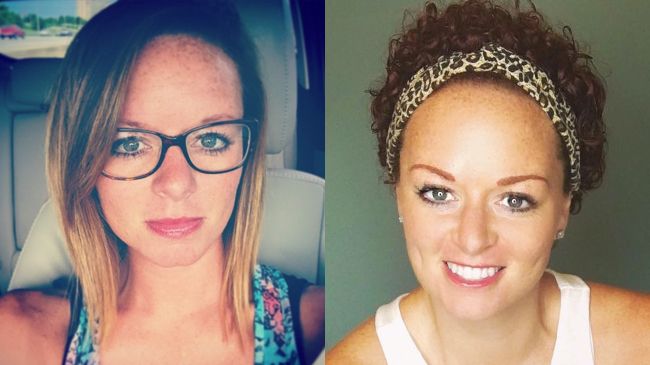
October is Breast Cancer Awareness Month, which gives us the opportunity to celebrate some of the bravest women in our lives. Oftentimes when someone goes through a tough time, all we want to do is help them and ease the pain. With cancer, this is particularly difficult because the right words are so hard to find. So let us do for you what we do best with some advice on one of the beautiful and complicated effects of battling cancer: chemo curls.
It’s common for those undergoing cancer treatments to experience chemo hair loss throughout the course of their treatment. Near the end or after finishing treatment, patients usually start re-growing their hair, oftentimes in a completely new texture. Some straighties even start to grow back curly hair due to the damage done to their hair shaft from the chemo. Finishing chemo is a joyous time for both patients and their family members. Don’t let a new hair texture get you down! Instead, stay flexible and adjust your hair care routine to accommodate your re-growth.
What Are “Chemo Curls”?
When women start growing in a mass of curls following chemo, they start referring to their new hair as “chemo curls.” Chemo curls can be new and exciting if you’ve always wanted curly hair. They can also be a big pain if you’ve never had curls, never wanted curls, and are fighting the urge to press your hair between the plates of a flat iron.
So what causes you to start growing curly hair following chemo?
When chemotherapy enters the body, its intention is to attack the cancer cells. However, it also attacks the cells responsible for hair growth. Since chemo damages the hair shaft, most chemo patients lose hair quickly. Due to the amount of chemo that remains in the body when one finishes treatment, it takes a while for hair to grow back. When it does grow back, it’s usually quite different from the hair you once had because of the damage that’s done to the cells that determine hair texture. Many patients do find that hair eventually returns to its pre-chemo state or close to it. So if you’re dealing with a completely different hair texture, know that it’s possible that they may not permanent.
How to care for chemo curls
If you’re a new curly, we have some tips for you! Even though your curls may only be temporary, they can be very enjoyable if you know how to care for them properly.
Moisturize, Moisturize, Moisturize
One thing you may not realize after a life with straight hair is the need to keep your curly locks thoroughly moisturized. This involves practices such as deep conditioning, using leave-in conditioners and occasional oil treatments or hair masks.
If you’re new to the task of shopping for curly products, this list of our favorites, as chosen by the NaturallyCurly editors, is a great place to start.
Avoid brushes
Straight hair, after being windblown, can usually tolerate a quick brush-through. Curly hair, on the other hand, despises brushing! Once your hair has been washed, apply a leave-in and a styler, then air-dry and leave it alone. Many curlies opt to use a gel following leave-in conditioner. Choose a lightweight gel that will give you the control you need throughout the day, but won’t weigh it down. Here are a few of our favorite gels for curly hair.
Detangle
This is something you’ll probably carry over from caring for your straight hair. However, detangling is very important in curly hair. Failing to do so can lead to immediate frizz (that culminates in a huge rat’s nest”> and breakage that will ultimately damage your hair’s newfound curl pattern. Many curlies detangle in the shower with a wide tooth comb when their hair is fully saturated with conditioner, this provides your hair with enough “slip” to comb or run your fingers through your hair without snagging on knots.
Curly Support
Congratulations on your new curly locks! To get started on caring properly for your gorgeous hair, start off with determining your curl type. NaturallyCurly is overflowing with type-specific content that will help you navigate this new time of your life. If you have specific questions for the NaturallyCurly community, head on over to CurlTalk, where you now have the largest haircare community at your fingertips. Enjoy!
We want to hear from you! What are some ways you’ve learned to cope with curls that didn’t turn up until after chemotherapy?
Want More?
If you’re ready for more curly hair tips, head on over to the Beginner’s Guide to Wearing Your Hair Curly.
Read about curly hair icon Ouidad’s fight against breast cancer.
Like what you see? For more articles like this, sign up for our newsletter!
This post was originally published in 2012 and has been updated for grammar and clarity.








